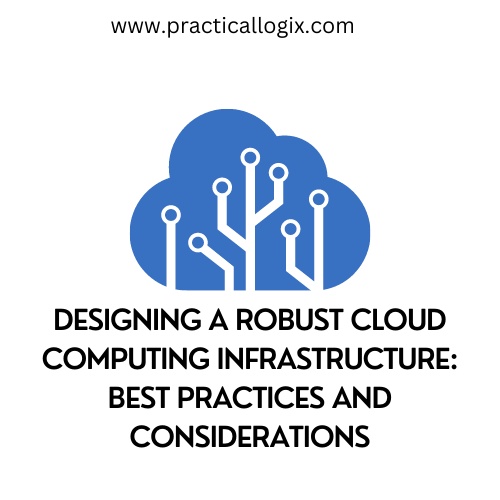This blog post discusses the importance of a strong cloud computing infrastructure for businesses in the digital era, as it offers agility, scalability, and cost-effectiveness. The post also provides tips and essential factors to consider when designing a cloud infrastructure tailored to your organization's needs.
1. Define Your Requirements
To create a cloud computing infrastructure, start by defining your requirements. This means considering factors such as performance, scalability, availability, security, and compliance. It's also important to assess workload characteristics, such as data storage and processing needs, application dependencies, and traffic patterns. You should also understand where your users are located and their latency requirements. By defining these requirements from the beginning, you'll be able to choose the right cloud service models and components for your needs.
2. Choose the Right Cloud Service Model
Examine the different cloud service models, which are Infrastructure as a Service (IaaS), Platform as a Service (PaaS), and Software as a Service (SaaS). Then, choose the model based on your specific requirements. Decide on the level of responsibility and control you need, as IaaS gives more control but requires handling the infrastructure, while SaaS offers less customization but the highest abstraction. Weigh the advantages and disadvantages and select the ideal model that meets your organization's needs.
3. Architect for Resilience and High Availability
To avoid service disruptions, it's important to plan for resilience and high availability. One way to do this is by using multiple regions and availability zones provided by cloud providers to spread out your infrastructure. You can also use load balancing, automatic scaling, and failover mechanisms to manage sudden traffic increases and reduce downtime. By separating components and using backup resources, you can design a reliable system that can withstand failures without breaking down.To sure your infrastructure can withstand unexpected issues, it's important to conduct frequent tests and simulate failure scenarios. You may want to use managed services such as database replication, content delivery networks (CDNs), and disaster recovery solutions to improve availability.
4. Secure Your Infrastructure
It is important to prioritize security in the design of your cloud infrastructure. Incorporate strong security measures like network segmentation, access controls, encryption, and intrusion detection systems. Keep your systems up to date with regular updates and patches to address vulnerabilities. Use identity and access management (IAM) solutions to manage user permissions and privileges. Additionally, you should think about implementing data loss prevention (DLP) and threat intelligence solutions to protect sensitive data.To ensure security, regularly conduct security audits and penetration testing to detect and address any vulnerabilities. It's important to keep in mind that security is a collaborative effort between you and the cloud provider, so make sure you have a clear understanding of their security services and obligations.
5. Optimize Cost and Performance
To achieve a good return on investment, it's important to balance cost and performance. You can do this by choosing the best instance types, storage options and network configurations for your workload needs. To keep track of and optimize resource usage, use the cost management tools offered by your cloud provider.To improve performance, consider implementing caching mechanisms, content delivery networks (CDNs), and database optimizations. If applicable, use serverless computing to eliminate the need for provisioning and managing servers. It's also important to regularly review and optimize your infrastructure to ensure cost-efficiency without sacrificing performance.
Conclusion
To create a strong cloud computing system, you need to plan and consider several factors. These include defining your requirements, choosing the correct cloud service model, creating a resilient and highly available architecture, securing your infrastructure, and optimizing cost and performance. By doing this, you can build a solid foundation that supports your organization's objectives and fully utilizes the benefits of cloud computing.


No comments yet